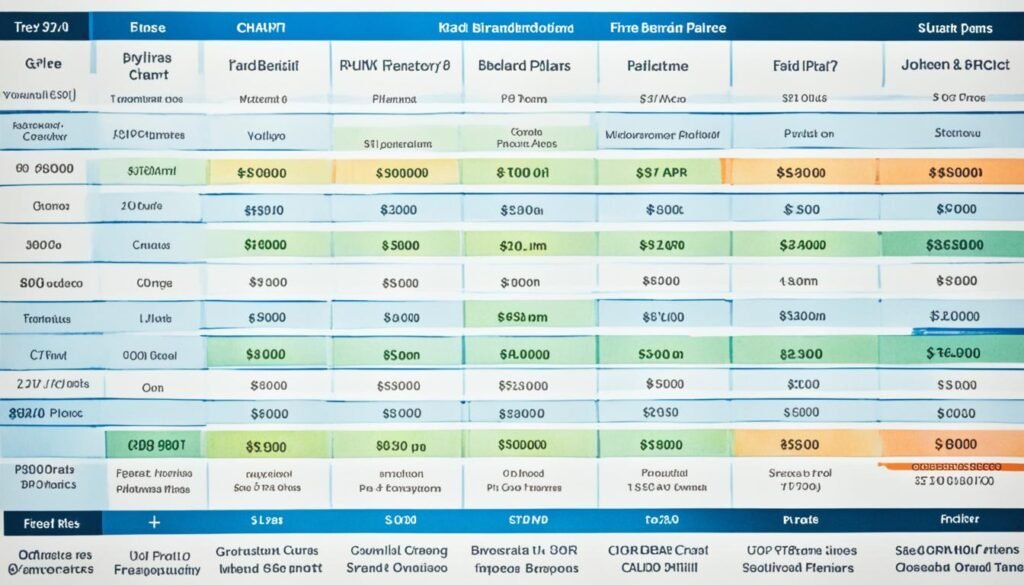Telecombrother 中國移動月費計劃提供多樣化的月費計劃,滿足不同用戶的上網數據流量和國內語音通話費需求。本指南將幫助您瞭解如何在合約期內智慧地調整中國移動月費計劃,讓您的通訊服務更加經濟實惠。了解中國移動月費計劃的特點是選擇合適方案的第一步。
重點提示
- 了解不同中國移動月費計劃的特點
- 評估中國移動月費計劃個人通訊需求
- 比較中國移動月費計劃4G資費方案
- 瞭解變更中國移動月費計劃的可能性
- 避免額外的變更費用
瞭解中國移動月費計劃及其選擇的必要性
在快速變化的通訊世界中,選擇正確的手機月費計劃變得越來越重要。中國移動提供多樣化的通訊方案,滿足不同用戶的需求。了解這些中國移動月費計劃可以幫助您節省開支,同時享受最佳的網絡服務。每個中國移動月費計劃都具有獨特的優勢,能夠滿足不同的使用需求。。

中國移動月費計劃的多樣性
中國移動優惠方案包括多種類型的月費計劃,以滿足不同用戶的通訊需求:
- 標準套餐:適合日常使用的基本方案
- 無限數據計劃:為重度數據用戶設計
- 流量加倍方案:提供額外數據流量的靈活選擇
影響月費計劃選擇的關鍵因素
在選擇合適的月費計劃時,您需要考慮以下重要因素:
- 個人通訊使用習慣
- 月度預算限制
- 數據使用需求
- 網絡覆蓋範圍
為何進行寬頻比較至關重要
進行全面的寬頻比較可以幫助您找到最適合自己的中國移動月費計劃。通過仔細比較不同方案的特點和價格,您可以確保獲得性價比最高的通訊服務。
選擇正確的月費計劃不僅能節省開支,還能確保您獲得最佳的通訊體驗。
如何進行有效的寬頻比較來選擇最佳中國移動月費計劃
在選擇中國移動月費計劃時,正確的比較方法至關重要。不同的通訊需求意味著每個人都需要找到最適合自己的資費方案。以下是幫助您做出明智選擇的專業指南。
收集計劃資訊的關鍵步驟
比較月費計劃時,您需要關注幾個重要指標:
- 夜間優惠資費的具體細節
- 語音通話分鐘數的實際額度
- 國內漫遊費用的透明度
- 數據流量的使用限制
使用比較工具的實用技巧
現在,許多線上工具可以幫助您輕鬆比較不同的月費計劃。建議您:
- 使用官方中國移動網站的比較工具
- 查看用戶論壇和評價
- 下載比較應用程式
- 諮詢客服代表
根據個人需求進行精準比較
每個人的通訊需求都是獨特的。您應該根據自身的使用習慣,仔細評估各項服務。例如,如果您經常在晚上使用手機,那麼夜間優惠資費就特別重要。對於經常出差的用戶,國內漫遊費用和語音通話分鐘數將成為關鍵考慮因素。
通過細心比較和分析,您一定能找到最適合自己的中國移動月費計劃。
變更中國移動月費計劃的步驟及注意事項
當您決定調整中國移動月費計劃時,需要仔細考慮多個重要因素。變更4G資費和上網數據流量可能看似複雜,但通過正確的方法,您可以輕鬆完成這一過程。每位用戶的通訊需求都在不斷變化,因此靈活調整中國移動月費計劃至關重要。
變更計劃的渠道多樣,包括中國移動官方APP、客服熱線和實體門店。建議您首先在網上或APP中預先了解不同的月費計劃選項,比較上網數據流量和資費細節。在做出決定前,仔細評估您的實際通訊需求,選擇最適合自己的中國移動月費計劃。
在變更過程中,務必關注合約期限和可能產生的費用。某些計劃可能存在提前終止的額外收費,因此建議您提前與客服確認詳細條款。通過持續比較不同的4G資費方案,您可以確保始終獲得最優惠和最符合個人需求的中國移動月費計劃。
最後,建議定期檢視和評估您的通訊需求。市場上的資費套餐不斷更新,保持靈活和主動的態度,可以幫助您始終選擇最適合的中國移動月費計劃,既能節省開支,又能滿足日常通訊需求。
FAQ
如何知道我目前的中國移動月費計劃是否適合我?
要確定您的月費計劃是否合適,您需要分析自己的實際通訊使用情況。建議檢查您每月的數據流量使用量、語音通話分鐘數和實際開支,將其與當前套餐進行比較。如果您經常超出套餐限制或未充分利用,可能需要考慮調整月費計劃。
變更中國移動月費計劃是否會產生額外費用?
變更月費計劃可能會產生不同的費用,這取決於您的合約期限和選擇的新套餐。在合約期內變更可能需要支付提前終止費用。建議您提前與中國移動客服確認具體的費用詳情,並仔細評估變更的成本效益。
我可以通過哪些管道變更我的中國移動月費計劃?
您可以通過多種管道變更月費計劃: – 使用中國移動官方APP – 撥打中國移動客服熱線 – 親臨中國移動實體門市 – 透過官方網站進行線上變更 每種管道都有其優缺點,建議選擇最方便的方式進行操作。
無限數據計劃真的有「無限」嗎?
無限數據計劃通常有一些使用限制。雖然名為「無限」,但往往在高速數據使用達到一定流量後會降速。建議仔細閱讀套餐細則,了解具體的數據使用條款和速度限制,以避免使用中的意外surprises。
如何選擇最適合的4G資費方案?
選擇4G資費方案時,需要考慮以下因素: – 個人每月平均數據使用量 – 預算限制 – 網絡覆蓋範圍 – 語音通話需求 – 是否需要國內或國際漫遊服務 建議進行詳細的對比分析,並根據個人實際需求選擇最合適的方案。
變更月費計劃後,我的號碼和服務會受影響嗎?
通常情況下,變更月費計劃不會影響您的手機號碼和基本服務。然而,可能會有以下變化: – 數據流量限制 – 語音通話分鐘數 – 資費優惠 – 漫遊服務 建議在變更前與客服確認具體細節,以確保服務持續正常。



























